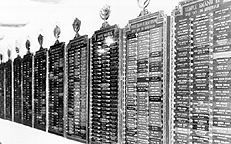
While death is a part of the cycle of life, it is a difficult subject to understand and deal with. When a loved one dies, the people who are left behind not only lose the person they love but are also reminded of their own mortality.
Traditionally there are a series of customs that a Jewish family and community perform as their loved one approaches death, and then for some time after the person passes on.
When a strictly observant Jew is close to death, they customarily make a confession or recite the Shema. A member of the immediate family will also tend to remain in the room with the dying person. Moreover after one has died, and is moved to the funeral home, someone from the funeral home stays with the body reciting prayers until it is time for the burial.
After the person passes on there are rituals that a Jewish family and community follows with the intent of maintaining the deceased's dignity while at the same time provide comfort to the living who must now deal with the loved one's death.
 It is important in the Jewish culture for the body to be buried
as soon as possible. However if time is required for family to
travel for the funeral, or the closest day after a death is Shabbat,
or the first or last day of a Jewish holiday,
the funeral may be postponed. Before the family goes to the funeral
chapel or synagogue for the service, the home where Shivah (seven
days of formalized mourning) is going to be kept is prepared.
All the mirrors of the home are covered with either paper or a
white scouring powder. There are two rationales behind this custom.
As death is a time of great sorrow, the bereaved are not to be
concerned with their outer physical appearance. A second rationale
is that it was once believed that the spirit of the person who
looked in the mirror could be snatched away by the deceased. Some
funeral homes will send people to the house to prepare the home
while others cover the mirrors themselves. Just before going to
the service one performs the ritual of cutting keriah, tearing
of a garment. The tears are not fully repaired, symbolizing the
never fully repaired loss of a loved one.
It is important in the Jewish culture for the body to be buried
as soon as possible. However if time is required for family to
travel for the funeral, or the closest day after a death is Shabbat,
or the first or last day of a Jewish holiday,
the funeral may be postponed. Before the family goes to the funeral
chapel or synagogue for the service, the home where Shivah (seven
days of formalized mourning) is going to be kept is prepared.
All the mirrors of the home are covered with either paper or a
white scouring powder. There are two rationales behind this custom.
As death is a time of great sorrow, the bereaved are not to be
concerned with their outer physical appearance. A second rationale
is that it was once believed that the spirit of the person who
looked in the mirror could be snatched away by the deceased. Some
funeral homes will send people to the house to prepare the home
while others cover the mirrors themselves. Just before going to
the service one performs the ritual of cutting keriah, tearing
of a garment. The tears are not fully repaired, symbolizing the
never fully repaired loss of a loved one.
The funeral service is usually conducted by a Rabbi and a Cantor. For the duration of the service the family may either sit in a private area or in the front row of the chapel. After the traditional prayers are sung, the Rabbi will offer a eulogy. This is an opportunity for one to pay honour to the deceased as one remembers their life, family, and their professional and community accomplishments.
After the service the casket is carried out by pallbearers to the hearse where the mourners then proceed to the cemetery for burial. The time at the cemetery is very solemn. The casket is carried to the grave feet first as it is a superstitious belief that the deceased's soul might be tempted to look back. The casket is lowered into the ground as prayers are recited. Family and friends then fill the grave with dirt. At the conclusion of the burial loved ones return home. Before entering the home, one must remember to wash their hands. This custom has stemmed from the belief that one needs to wash themselves from the impurity that is part of death.

The sitting of shivah will now begin and will end seven days later. Upon entering the home a family member lights a shivah candle that acts as a sign of respect for the deceased. This candle will burn for the entire seven day period. One does not sit shivah on the Shabbat (Day of Rest). One "sits shivah" for their spouse, parents, sibling and child. The first meal eaten is one made of traditional foods that symbolize life such as hard boiled eggs, bread, and lentils. The other family members and friends visit the shivah house and provide support, and pay their respects. Those who sit shivah sit on chairs that are very close to the ground. The reasoning behind this is that these chairs are uncomfortable, as is the time of mourning, and secondly these shivah chairs enable one to be close to the ground, hence close to their loved one. Friends and family often send platters of food to the shivah house as those who are in mourning need not be bothered with food preparation. The mourner's Kaddish (a prayer recited for the dead) is recited three times a day: morning, afternoon and in the evening during the seven days of shivah.
Following the seven days of shivah the candle goes out, the mirrors are exposed and one can begin to mourn in a less formalized setting. For the next year a member of one's congregation or another mourner says the mourner's Kaddish every day. Some time after the burial the headstone is unveiled in a ceremony with family and friends. One of the last rituals is the lighting of the Yartzheit candle on the annual anniversary of the death.

| Back to Life Cycle | Glossary | Jewish Holidays | Treasures | Home Page |